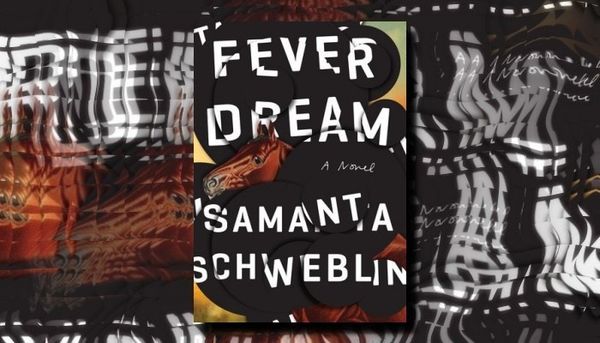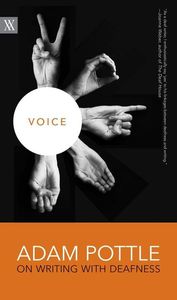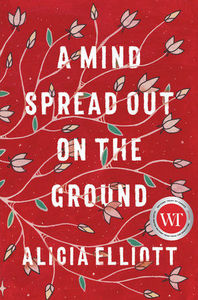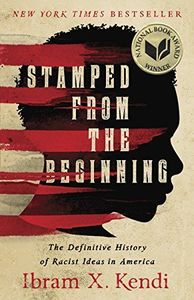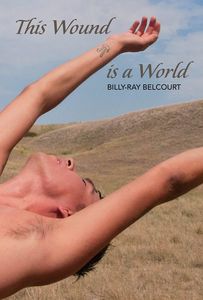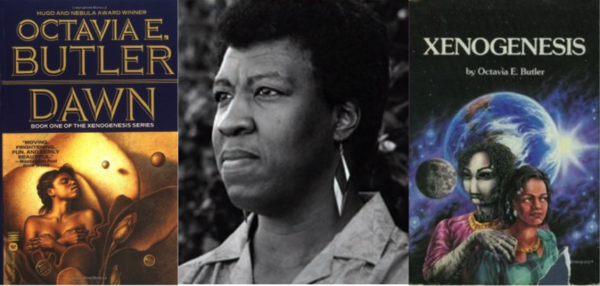The Craft of Reading: How Reading 260 Books This Year Made Me a Better Writer
By A.H. Reaume
I was making a care package for a writer friend recently and wanted to include a book in it.
“What have you been dying to read?” I asked her before heading out to the bookstore.
“Fever Dream by Samanta Schweblin,” she said -- and I knew immediately why. The surreal feeling of the novel was similar to what she was trying to achieve in sections of her work-in-progress.
We don’t talk enough about the craft of reading and its intimate and necessary connection to the craft of writing. Reading well and reading widely doesn’t just make us better writers but it shapes our writing in ways that can utterly transform its direction, scope, and form.
If I hadn’t discovered Virginia Woolf at 16, I don’t think I would be as interested in playing with form as a writer as I am now. While it took me three tries to get through the first sentence of To the Lighthouse, when I finally did I was hooked.
The way that Woolf constructs her sentences expanded my idea of what you could do as a writer with language and grammar and what language and grammar could do to you as a reader. The way she integrated the inner lives of her characters within the action upended long treasured ideas of what I thought fiction could do. And the ‘Time Passes’ section in which she personifies the way weather and time wear down the Ramsay family’s summer home and by doing so abstractly relates the Ramsays’ experiences during the First World War? I would need to sit across from you with a cup of tea for several hours to fully explain how that formed me as a writer.
Since then, I’ve sought out writers who do interesting things with form because I find it exciting to watch a writer experiment (to me, it feels akin to watching a jazz musician improvise) – but also because it builds up my tool kit as a writer. Because of this broad reading, my imagination isn’t limited to traditional forms – but I can call to mind the way that other writers have written things in inventive ways and be just as creative at solving problems or finding the right shape for a story in my own work.
When we’re kids, we are taught the rules of writing as though they are firm and established things, but writing that breaks rules, writing that pretends that rules don’t exist, writing that undoes the rules one by one and revels in that act can undo and remake us as writers.
What forms us as writers is individual – not everyone needs to read Woolf to understand what they want to do with their writing and not everyone geeks out at playing with form -- but the more books your read the more possible solutions to your next writing dilemma you add to your repertoire. The right books inspire us as writers and show us the way we need to write our own stories.
If you’re trying to do something with fiction, poetry, or non-fiction that hasn’t often been done reading the work of someone else who has done it, like my friend is doing, is like perusing a map of the wilderness. The writer is showing you one way to traverse areas that are off the hiking trail. You will have to find your own way but seeing the strategies that others used to navigate the terrain can inspire you – both by helping you conceptualize what you want to do and what you want to avoid.
Your CanLit News
Subscribe to Open Book’s newsletter to get local book events, literary content, writing tips, and more in your inbox
Of course, reading does so much more than just show you possibilities as a writer. This morning before I sat down to write this, I was reading a literary theory book and had three ideas about my next book-length project before I was 10 pages in. Books can also help us learn new things, understand people who are different than we are better, and show us how to be more ethical writers. They can make us ask questions about the nature of stories, what they do in the world and to readers, and what stories we should or shouldn’t be telling and why.
Like writing, reading is also a craft – it’s an art form of its own to seek out the right books and read them well. It takes time and skill to take them apart and understand how they work or how they fail.
I’m a prolific reader and always have been, but my commitment to reading has deepened in the last couple of years. Since I experienced a brain injury two and a half years ago, I’ve had pain and cognitive deficits when using screens and so I’ve reduced my screen use. That means I don’t watch TV or movies. My primary form of entertainment is books. Last year, I read 275 books and learned so much from them. This year, I read over 260 books and also learned a lot.
Because I’m a notorious reader, people are often asking me for recommendations. I wanted to do a roundup of the books that mattered to me this year and that I think others would like – but I wanted to talk about those books by looking at how reading them has made me a better writer. Here are my favourites:
Memoirs
Voice: On Writing with Deafness by Adam Pottle
This writing memoir that looks at the ways in which Pottle’s deafness has impacted his imagination and made him a better writer was one of my favourite reads of the year. It’s funny and heart wrenching and uses playful and experimental ways to talk about silence and imagination. I learned a lot about how to narrate bodies that are different which as a disabled writer I’m always interested in learning more about.
In the Dream House by Carmen Maria Machado
I don’t know what to say about this book except that you have to read it. A memoir about abuse within a same-sex relationship, the story is told in fragments with each chapter focused on a different genre. The short snippets circle around the trauma of abuse and bring the reader on a journey into relationship violence that replicates the chaos and disjunctions of its experience within a relationship. I learned lessons about the many ways you can tell the same story or use genres to both show and conceal.
Essay Collections
A Mind Spread Out on the Ground by Alicia Elliott
This was on my list last year since I read an advanced copy of this book in 2018, but I also listened to the audiobook this year so it’s going on my list again. I learned even more from it on closer study. Elliott’s book is a masterclass on how to write braided essays that combine the personal and the political. It also is a key read for white writers since it talks about representation and who has a right to tell stories as well as how to tell stories ethically. I especially loved the last essay in the collection which is experimental and redefines the role of the reader by making the reader actively contribute to the essay.
Thick: And Other Essays by Tressie McMillan Cottom
This book of essays about black womanhood, whiteness, class, capitalism, and beauty taught me new ways to talk about complex political topics in a very sophisticated way while grounding it in personal narrative. The level and depth of discourse that Cottom invites the reader to participate in while still making it accessible is breathtaking.
Pleasure Activism: the Politics of Feeling Good by adrienne maree brown
This book looks at how to incorporate pleasure into activism and I loved it as an activist who has burned out multiple times. But what I loved as a writer was seeing the author braid personal experience with life instruction with theory from amazing women of colour theorists, and with dialogues with other thinkers. This book taught me the ethics of claiming authority on a subject you’re writing about but also seeking out that authority in others – even in books where you are being positioned as the expert.
The Witches Are Coming by Lindy West
Incisive, sharp and hilarious, Lindy West’s essays never disappoint. She is able to weave together humour and deep intellectual engagement with a topic like no other writer is able to do. I love everything she writes – read her other collection Shrill too! She will help you bring humour into your own writing. You will never be as funny as Lindy, though.
Turn This World Inside Out: The Emergence of Nurturance Culture by Nora Samaran
I loved the topic of this short book but the form also stuck with me. The book is written in essays and dialogues and the approach that Samaran took to the material taught me how a writer can bring up complex issues and ask open questions about them without having to resolve them. Samaran’s book is centered around an essay she wrote about rape culture that went viral and includes dialogues with people critical of the initial essay that help expand it and deepen its meaning. It is a lesson for writers in how to add different perspectives, question oneself, and deepen a conversation in order to keep adding complexity.
History
Stamped from the Beginning: The Definitive History of Racist Ideas in America by Ibram X. Kendi
This book is a must-read. It shows the way that racist ideas were constructed and evolved throughout America’s history. While this is something that everyone should read, it’s also important that writers understand how our writing can either contribute to creating ideas whose result is further marginalization of oppressed groups or how we can work towards liberation and justice with our words.
The Warmth of Other Suns: The Epic Story of America’s Great Migration by Isabel Wilkerson
This is an evocative historical study that charts the migration of African Americans from the south to northern states throughout the 20th century. Wilkerson’s innovation lies in how she masterfully weaves the broader historical narrative of the migration together with four intimate biographies of individuals who were part of it. This blending of historical study with in-depth biography is a masterclass on how to write about sweeping historical changes in ways that allow the reader to understand their impact at an individual level.
Poetry
This Wound is the World by Billy-Ray Belcourt
I’m not a poet, but I learned so much from reading Belcourt’s Griffin Prize winning book. From a poem written as if it were a conversation on a dating app to his numbered series of poems – form is important to Belcourt. I left this book thinking about worlds – the ones we create together, the ones marginalized people are forced to live in because of the action and inaction of those with more power, and what a just and less wounding world might look like – questions all writers with privilege should be asking.
Deaf Republic by Ilya Kaminsky
I can’t tell you how many times I cried while reading this book. It’s a book about fascism and tyranny that looks at dissent and deafness as a form of resistance. I loved how it incorporated sign language. As a disabled writer, I am always looking for ways to adapt form to fit my experience of the world and I learned so much from this book.
Fiction
Octavia Butler – Xenogenesis series, EarthSeed series, and Kindred
Someone suggested I read Octavia Butler this year and I took their advice. I read 11 books by Butler in September. My favourites were the Xenogenesis series which presents the premise that the biggest flaw of human nature is that we have two irreconcilable traits: high intelligence and a passion for hierarchy. The EarthSeed series imagined a future in which a politician used the slogan “Make America Great Again,” and Kindred is a trenchant exploration of the history and legacy of race in America. I learned so much as a writer from Butler’s prophetic imagination and her ability to upend our ideas about binaries and identities.
Oil!, King Coal, and The Jungle by Upton Sinclair
Can fiction help rectify economic inequality? Reading these three books by Sinclair made me consider this question deeply. His socialist novels (of which these are only a small representation) succeeded in many ways at changing culture and even laws (The Jungle helped usher in modern food safety regulations) but failed in other ways at shifting us away from our dangerous and harmful course towards late capitalism. I’ve thought a lot about Sinclair’s place in the history of naturalist fiction and how it’s project continues to this day. What does it mean to write a book that seeks greater economic equality today? We should all be asking this question as writers.
The Future of Another Timeline by Annalee Newitz
This is a fascinating book about time travel that centers on an organization of feminist time travelers in a world where pro-life time travelers have made abortion illegal. It’s a great metaphor for the need to continue to stay vigilant in the fight for rights against those who try to take them away – but what I loved about Newitz’ book was how explicit she was about talking about her characters identities in progressive ways that decentered whiteness. I think this is the first book I’ve read in which a white character was identified as ‘white’ instead of the reader being expected to just assume that they were white unless otherwise stated. We should all be doing this as writers.
Normal People by Sally Rooney
Normal People was a lesson in both what to do and what to avoid doing. I loved this compulsively readable story about two people struggling to love each other because of their concern for what others might think and their own fear of getting hurt. But the story fell flat when it tried to talk about the female character getting pleasure out of pain during sex. Too many novelists don’t handle BDSM themes with sensitivity and instead pathologize what is a fairly mainstream kink that involves a whole culture of consent and care. That said, this book is a masterclass for how to draw out tension and keep the reader engaged.
Small Game Hunting at the Local Cowards Gun Club by Megan Gail Coles
My favourite novel to come out in Canada in 2019 was this spectacular book by Coles. Shortlisted for the Giller Prize, it’s a novel that everyone should read. The book examines toxic masculinity and rape culture in such stunning depth and detail. The book takes you inside the heads of a large cast of characters to see how different people enforce it, react to it, support it, or turn their backs on it. It also shows its devastating effects on women by how it warps their self-concept and lives. The book is experimental in how it transitions from one characters interior monologue to another’s so that they seem to meld together and you’re momentarily unsure of whose head you’re in – which works so well with Coles’ themes. This book is a masterclass in capturing character.
Invisible Man by Ralph Ellison
I could read this book every year and find new lessons in it. Invisible Man is a trenchant look at race and identity in America. This novel sears the reader in a way that I didn’t think was possible for fiction to do. I’m not sure if any writer will ever be able to match or even approach the brilliance that Ellison demonstrated in this book, but all writers should be reading, rereading, and learning from this work.
The views expressed by Open Book columnists are those held by the authors and do not necessarily reflect the views of Open Book.
A.H. Reaume is a Vancouver-based fiction writer who reads too much and is currently in too many book clubs (four in total). Reaume has a background in feminist activism and an M.A. in Canadian Literature from UBC. She's been published in the Vancouver Sun, The Globe and Mail, USAToday.com, and Time.com and is currently trying to finish her first novel.
